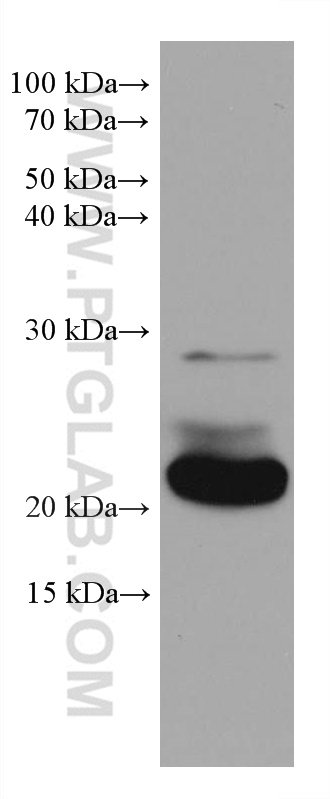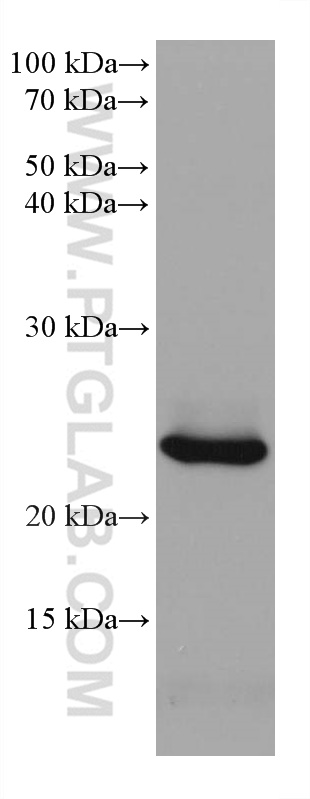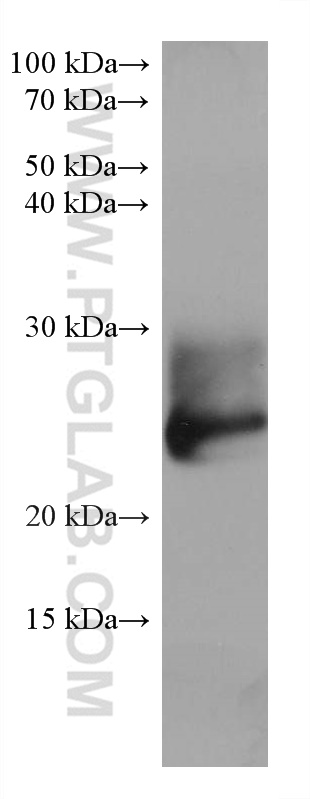验证数据展示
经过测试的应用
| Positive WB detected in | rabbit brain tissue, Jurkat cells, LNCaP cells, pig brain tissue, mouse brain tissue, pig cerebellum tissue, mouse cerebellum tissue |
推荐稀释比
| 应用 | 推荐稀释比 |
|---|---|
| Western Blot (WB) | WB : 1:5000-1:50000 |
| It is recommended that this reagent should be titrated in each testing system to obtain optimal results. | |
| Sample-dependent, Check data in validation data gallery. | |
产品信息
68014-1-Ig targets RAB39B in WB, ELISA applications and shows reactivity with Human, mouse, rat, rabbit, pig samples.
| 经测试应用 | WB, ELISA Application Description |
| 经测试反应性 | Human, mouse, rat, rabbit, pig |
| 免疫原 | RAB39B fusion protein Ag27170 种属同源性预测 |
| 宿主/亚型 | Mouse / IgG2b |
| 抗体类别 | Monoclonal |
| 产品类型 | Antibody |
| 全称 | RAB39B, member RAS oncogene family |
| 别名 | RAB39B, Ras related protein Rab 39B |
| 计算分子量 | 213 aa, 25 kDa |
| 观测分子量 | 25 kDa |
| GenBank蛋白编号 | BC009714 |
| 基因名称 | RAB39B |
| Gene ID (NCBI) | 116442 |
| RRID | AB_2918760 |
| 偶联类型 | Unconjugated |
| 形式 | Liquid |
| 纯化方式 | Protein A purification |
| UNIPROT ID | Q96DA2 |
| 储存缓冲液 | PBS with 0.02% sodium azide and 50% glycerol pH 7.3. |
| 储存条件 | Store at -20°C. Aliquoting is unnecessary for -20oC storage. |
背景介绍
RAB39B is a member of the RAB GTPase family with a putative role in vesicle trafficking. RAB39B is predominantly expressed in neuronal cells and is localized to the endoplasmic reticulum, Golgi and trans‐Golgi recycling endosomes. Several reports suggested that RAB39B may regulate protein trafficking and the PI3K-AKT-mTOR pathway. Mutations in RAB39B are known to be associated with X-linked intellectual disability (XLID), Parkinson's disease, and autism.
实验方案
| Product Specific Protocols | |
|---|---|
| WB protocol for RAB39B antibody 68014-1-Ig | Download protocol |
| Standard Protocols | |
|---|---|
| Click here to view our Standard Protocols |






